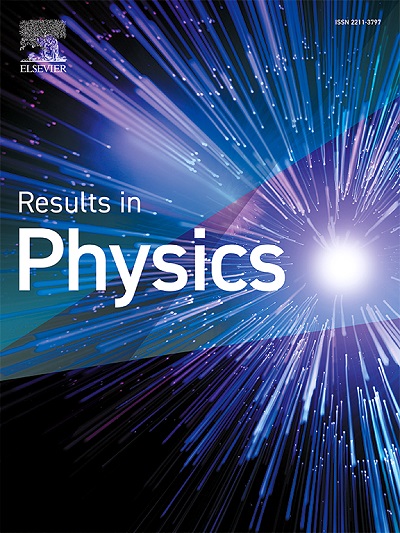Effects of asteroid belt and oblateness on the stability and orbits near triangular Lagrange points
IF 4.6
2区 物理与天体物理
Q2 MATERIALS SCIENCE, MULTIDISCIPLINARY
引用次数: 0
Abstract
This study investigates the dynamics of an infinitesimal body within the context of the restricted three-body problem, incorporating perturbations arising from the asteroid belt and the oblateness effects of the three bodies. The locations of the triangular Lagrange points are analytically derived, yielding results consistent with the classical case when perturbations are neglected. Furthermore, a detailed analysis of the relationship between various perturbations and the positions of the triangular Lagrange points is conducted, revealing that the horizontal positions are exclusively determined by the mass ratio , whereas the vertical positions are influenced by all considered perturbations, including the asteroid belt and oblateness effects. Subsequently, the stability of the triangular Lagrange points is examined, with a focus on the critical mass ratio , concluding that the triangular Lagrange points remain stable only under the condition . Additionally, we calculate the second- and third-order periodic orbits near the triangular Lagrange point using the Lindstedt–Poincaré method. Finally, numerical simulations are performed to validate the analytical results, demonstrating that an increase in the mass of the asteroid belt, as well as a greater oblateness of the primaries and the third body, leads to a more noticeable divergence between the second- and third-order periodic orbits. These findings provide deeper insights into the complex dynamics of celestial systems under the influence of multiple perturbations.
小行星带和扁率对三角形拉格朗日点附近的稳定性和轨道的影响
本研究在限制三体问题的背景下研究了一个无限小体的动力学,考虑了小行星带引起的扰动和三体的扁率效应。三角拉格朗日点的位置是解析导出的,在忽略微扰的情况下,得到的结果与经典情况一致。此外,详细分析了各种扰动与三角形拉格朗日点位置之间的关系,揭示了水平位置完全由质量比μ决定,而垂直位置受到所有考虑的扰动的影响,包括小行星带和扁率效应。在此基础上,研究了三角拉格朗日点的稳定性,重点考察了临界质量比μc,得出三角拉格朗日点仅在μ<;μc条件下保持稳定的结论。此外,我们用lindstedt - poincar方法计算了三角形拉格朗日点L4附近的二阶和三阶周期轨道。最后,进行了数值模拟来验证分析结果,表明小行星带质量的增加,以及主要天体和第三天体的更大扁率,导致二阶和三阶周期轨道之间更明显的分歧。这些发现为天体系统在多重扰动影响下的复杂动力学提供了更深入的见解。
本文章由计算机程序翻译,如有差异,请以英文原文为准。
求助全文
约1分钟内获得全文
求助全文
来源期刊

Results in Physics
MATERIALS SCIENCE, MULTIDISCIPLINARYPHYSIC-PHYSICS, MULTIDISCIPLINARY
CiteScore
8.70
自引率
9.40%
发文量
754
审稿时长
50 days
期刊介绍:
Results in Physics is an open access journal offering authors the opportunity to publish in all fundamental and interdisciplinary areas of physics, materials science, and applied physics. Papers of a theoretical, computational, and experimental nature are all welcome. Results in Physics accepts papers that are scientifically sound, technically correct and provide valuable new knowledge to the physics community. Topics such as three-dimensional flow and magnetohydrodynamics are not within the scope of Results in Physics.
Results in Physics welcomes three types of papers:
1. Full research papers
2. Microarticles: very short papers, no longer than two pages. They may consist of a single, but well-described piece of information, such as:
- Data and/or a plot plus a description
- Description of a new method or instrumentation
- Negative results
- Concept or design study
3. Letters to the Editor: Letters discussing a recent article published in Results in Physics are welcome. These are objective, constructive, or educational critiques of papers published in Results in Physics. Accepted letters will be sent to the author of the original paper for a response. Each letter and response is published together. Letters should be received within 8 weeks of the article''s publication. They should not exceed 750 words of text and 10 references.
 求助内容:
求助内容: 应助结果提醒方式:
应助结果提醒方式:


